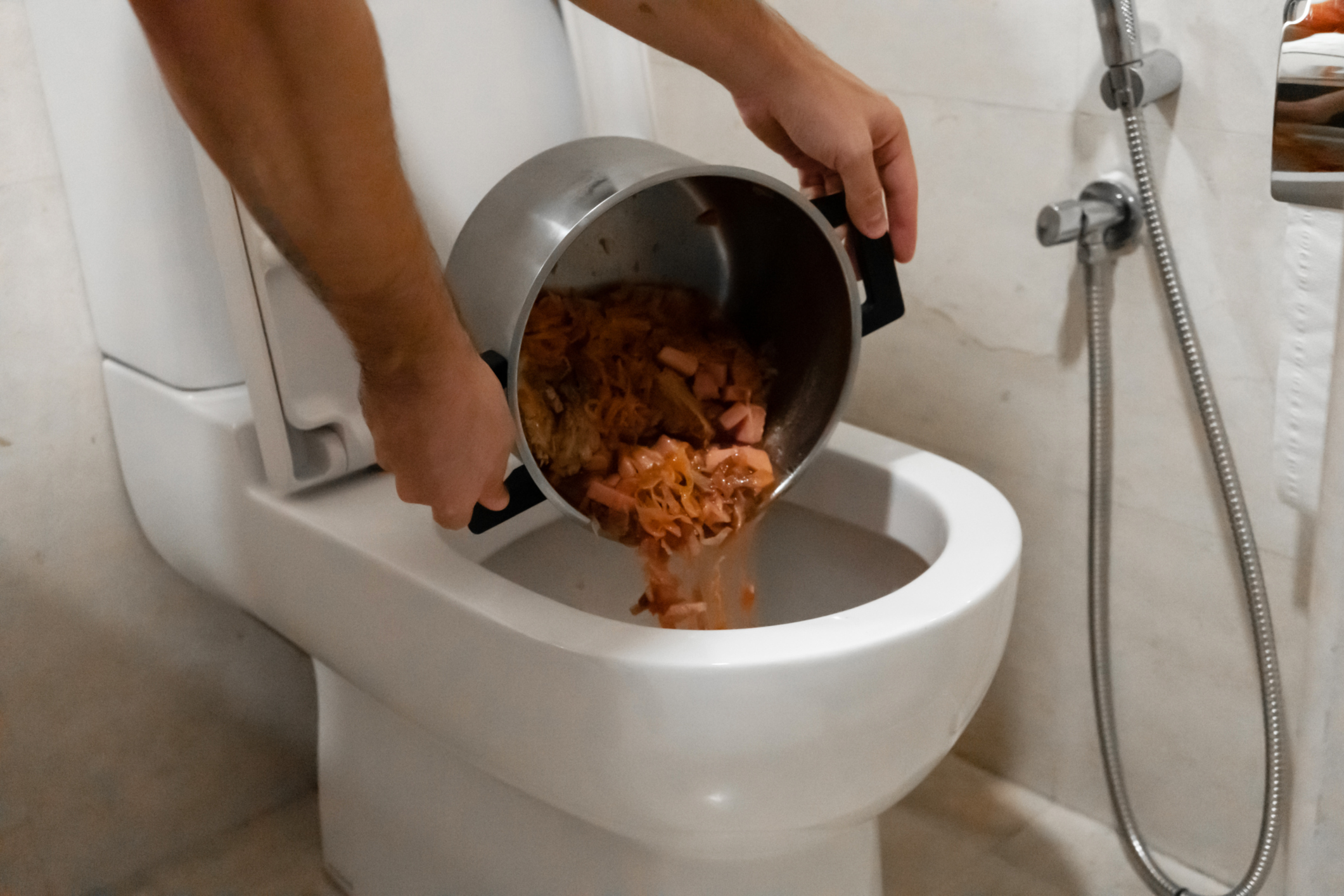Can You to Flush Food in the Toilet?
Can You to Flush Food in the Toilet?
Blog Article
In this article down the page you will find more excellent information with regards to What Can Happen If You Flush Food Down the Toilet?.

Intro
Lots of people are usually confronted with the dilemma of what to do with food waste, especially when it comes to leftovers or scraps. One usual concern that develops is whether it's all right to flush food down the toilet. In this write-up, we'll delve into the reasons individuals might take into consideration purging food, the consequences of doing so, and alternate methods for appropriate disposal.
Reasons why individuals might think about purging food
Lack of recognition
Some individuals may not understand the potential harm caused by flushing food down the bathroom. They might erroneously believe that it's a safe practice.
Benefit
Purging food down the toilet may feel like a fast and easy solution to throwing away unwanted scraps, particularly when there's no neighboring trash bin available.
Laziness
In some cases, individuals may just pick to flush food out of large laziness, without taking into consideration the consequences of their actions.
Repercussions of flushing food down the commode
Environmental effect
Food waste that ends up in rivers can contribute to pollution and damage water ecological communities. Additionally, the water used to flush food can strain water resources.
Pipes concerns
Flushing food can bring about clogged up pipes and drains pipes, creating pricey pipes repair work and hassles.
Types of food that need to not be flushed
Fibrous foods
Foods with coarse textures such as celery or corn husks can obtain entangled in pipelines and trigger clogs.
Starchy foods
Starchy foods like pasta and rice can take in water and swell, leading to clogs in pipelines.
Oils and fats
Greasy foods like bacon or food preparation oils ought to never be flushed down the bathroom as they can strengthen and trigger blockages.
Correct disposal approaches for food waste
Utilizing a garbage disposal
For homes equipped with waste disposal unit, food scraps can be ground up and flushed via the plumbing system. However, not all foods appropriate for disposal in this fashion.
Recycling
Specific food product packaging materials can be reused, reducing waste and lessening environmental effect.
Composting
Composting is an environmentally friendly means to get rid of food waste. Organic products can be composted and used to enhance dirt for horticulture.
The significance of appropriate waste monitoring
Minimizing ecological harm
Appropriate waste monitoring practices, such as composting and recycling, assistance decrease air pollution and preserve natural deposits for future generations.
Securing plumbing systems
By preventing the technique of flushing food down the bathroom, house owners can prevent costly plumbing repairs and maintain the honesty of their plumbing systems.
Verdict
In conclusion, while it may be appealing to purge food down the bathroom for benefit, it is essential to understand the potential consequences of this action. By taking on correct waste administration practices and disposing of food waste sensibly, people can add to healthier plumbing systems and a cleaner atmosphere for all.
FLUSH FOOD DOWN THE TOILET?
FLUSHING FOOD CAN CAUSE BLOCKED DRAINS IN YOUR HOME
All of the plumbing fixtures in your home are connected to the same sewer pipe outside of your home. This outdoor sewer pipe is responsible for transporting all the wastewater from your home to the Council sewer mains. Even small pieces of food that go down the kitchen sink can cause problems for your sewer. It should therefore be obvious that flushing larger bits of food, such as meat, risks a clog in either the toilet itself or the sewer pipes. Flushing greasy food is even more problematic because oil coagulates when it cools, coating the interior lining of your pipes.
THE TOILET IS NOT A BIN
Food isn’t the only thing that people shouldn’t be flushing down the toilet. People use the toilet to dispose of all kinds of things such as tampons, makeup wipes, dental floss, kitty litter and even underwear. Water goes to great lengths to educate residents about the high costs and stress placed on wastewater treatment systems simply from people flushing the wrong stuff down the toilet. It costs taxpayers millions of dollars each year, and homeowners thousands in blocked drain repairs.
FLUSHING FOOD IS A WASTE OF WATER
Flushing food is a waste of our most precious resource - water. In June this year Level 1 water restrictions were introduced to protect water supply from drought conditions. Much of New South Wales continues to be affected by prolonged drought with recent figures revealing up to 97 per cent of the state remains in drought. Depending on whether you have a single or dual flush toilet, every single flush uses between five and 11 litres of water. In the current climate this is a huge amount of water to be wasting on flushing food that should be placed in the bin (or better yet, the compost).
https://www.jabplumbingsolutions.com.au/blog/can-you-flush-food-down-the-toilet

As an avid person who reads on Think Twice Before Flushing Food Down Your Toilet, I imagined sharing that excerpt was worth the trouble. Are you aware of another person who is enthusiastic about the topic? Why not promote it. I love reading our article about Think Twice Before Flushing Food Down Your Toilet.
More Details Report this page